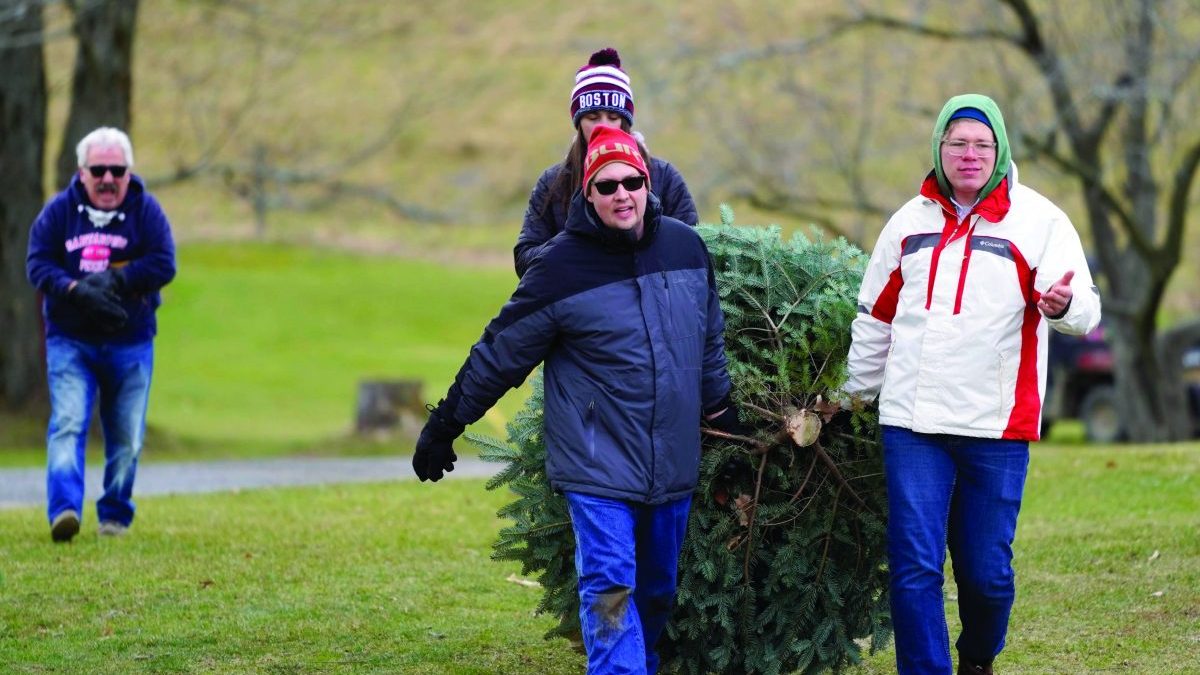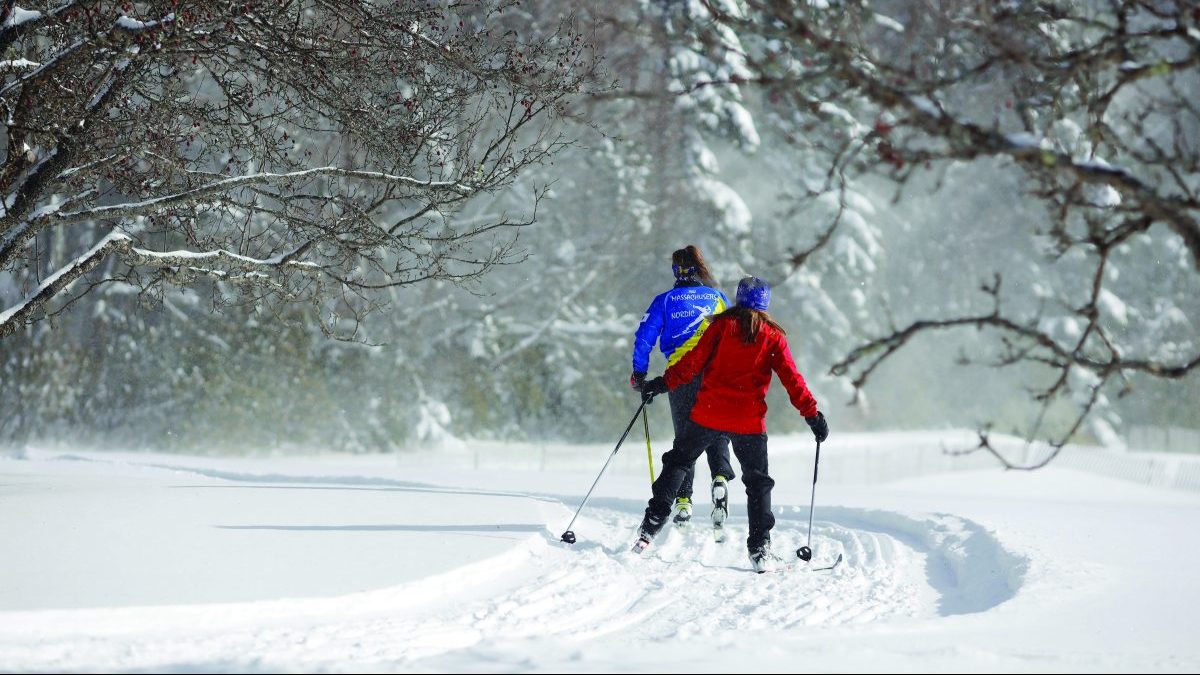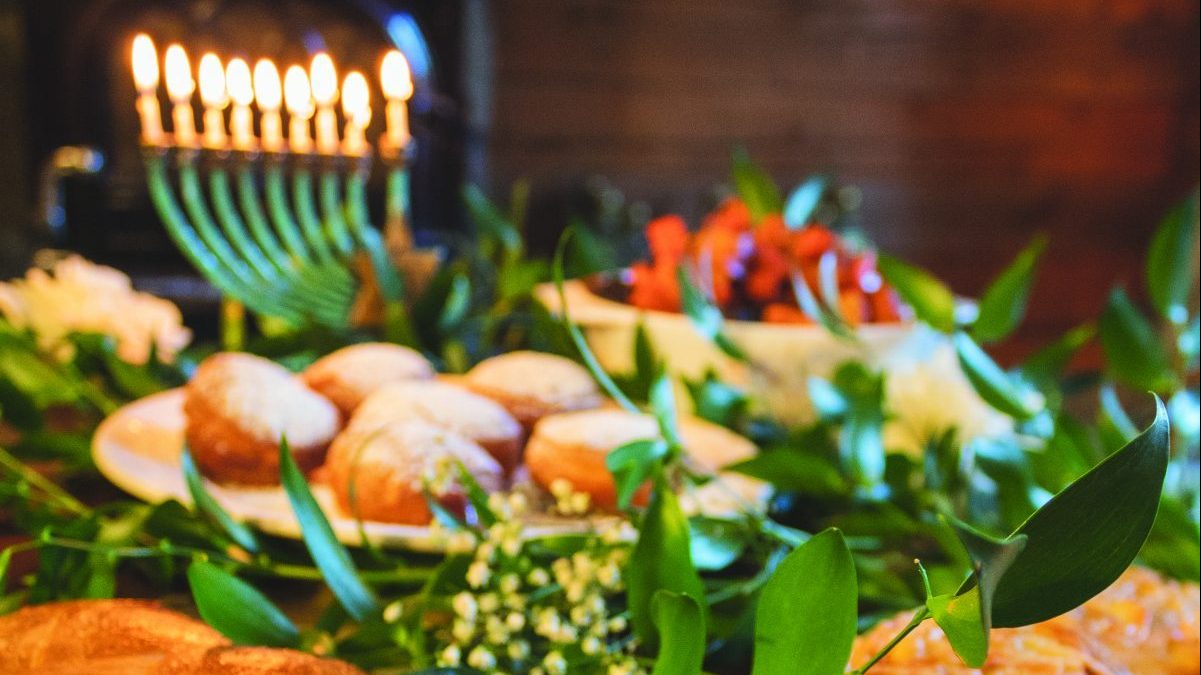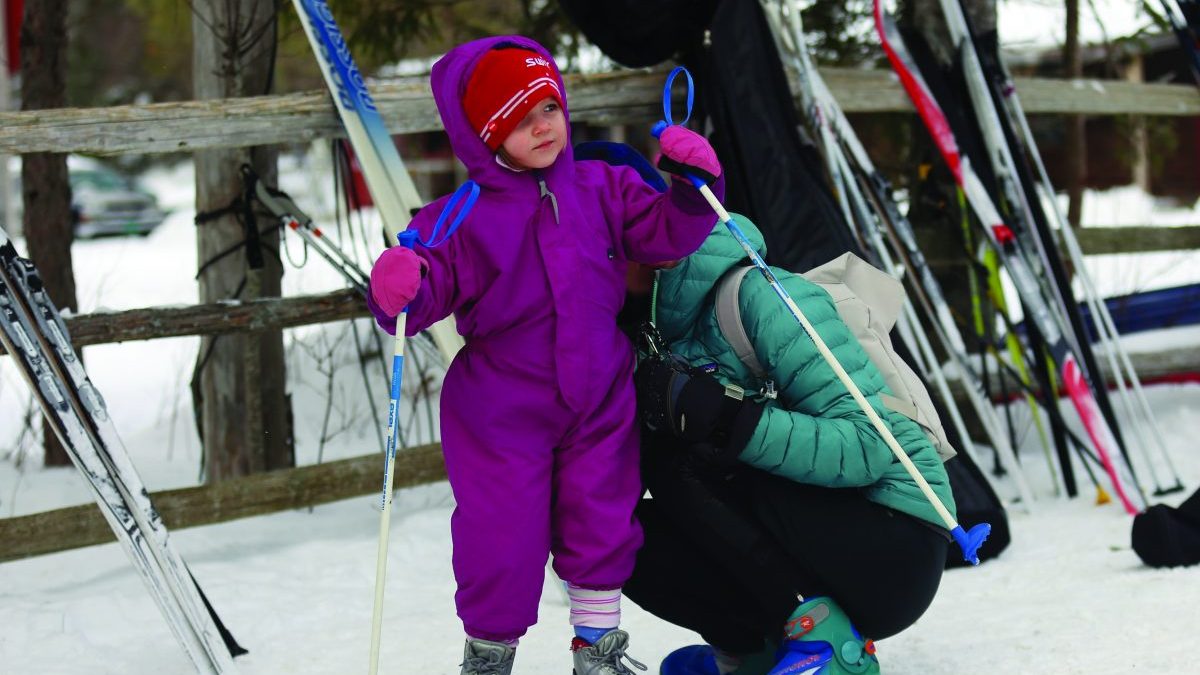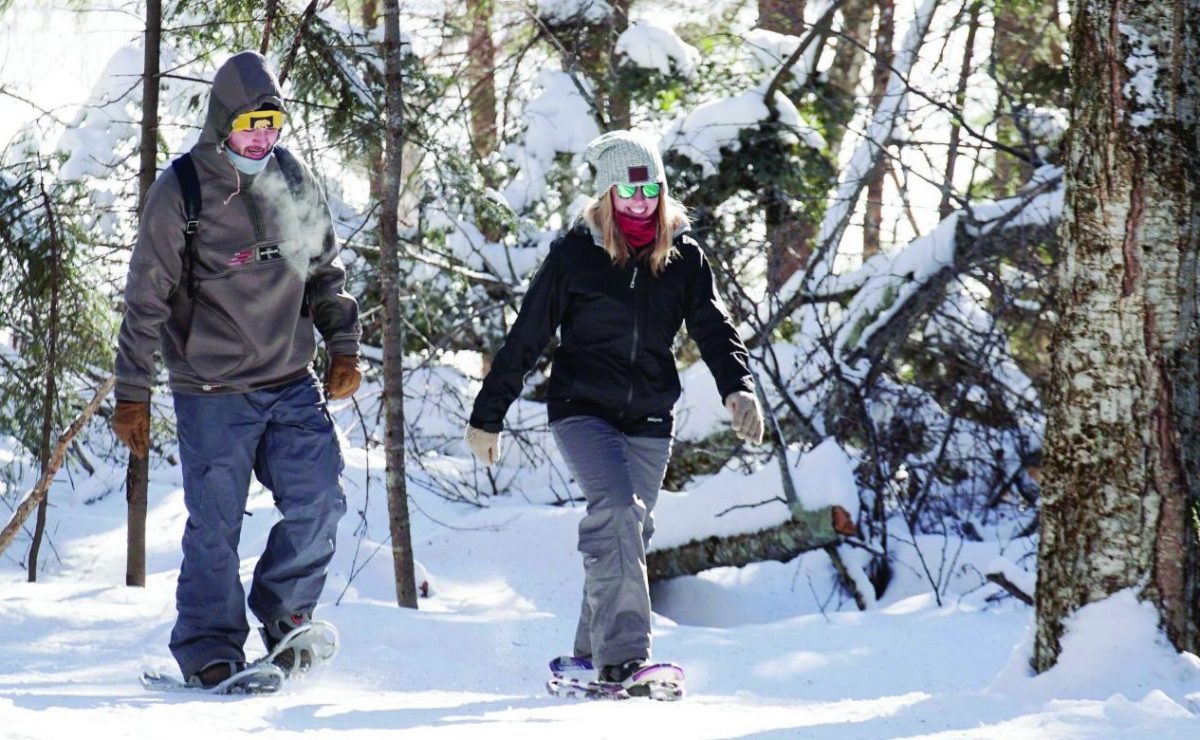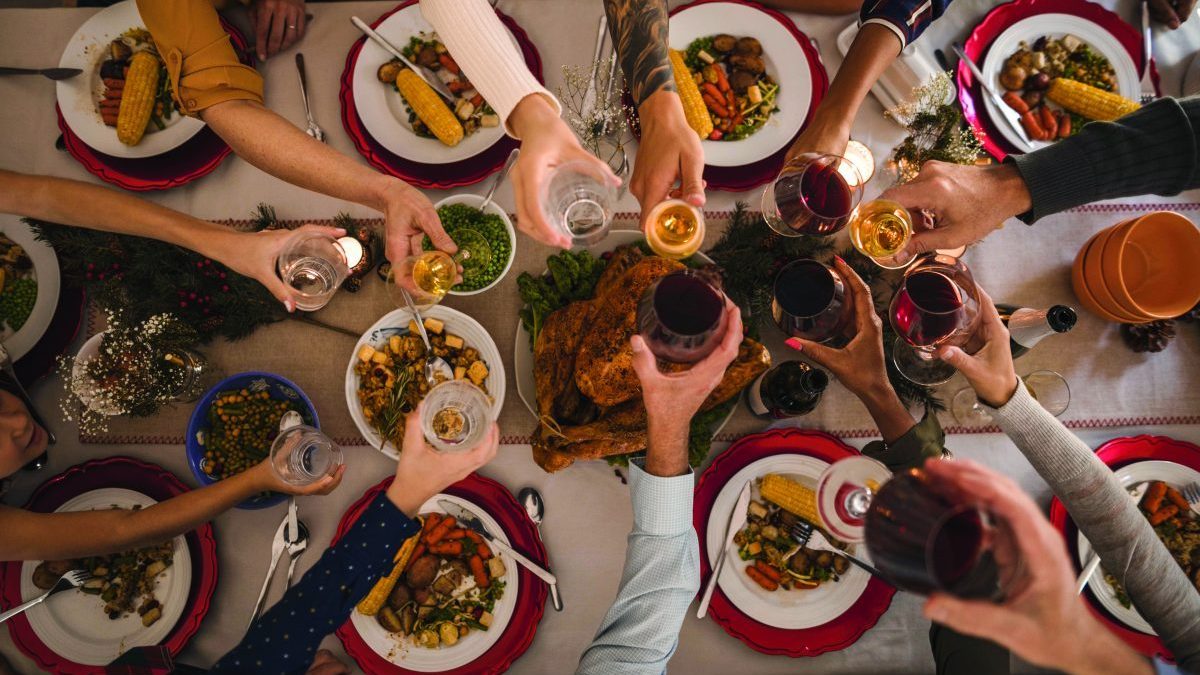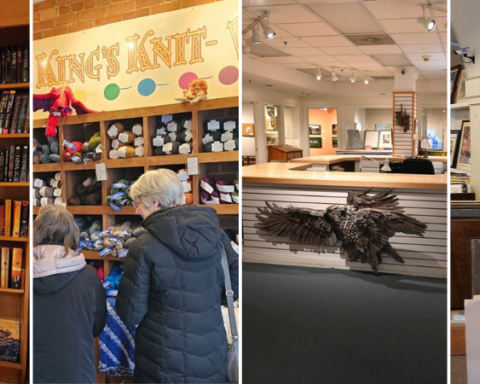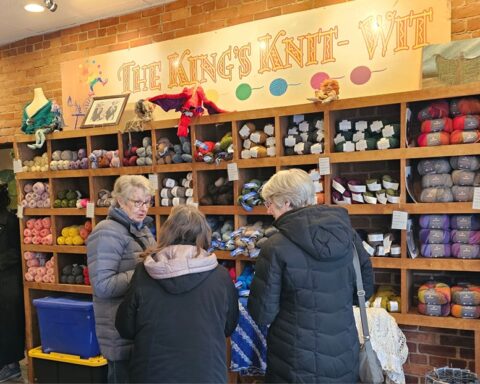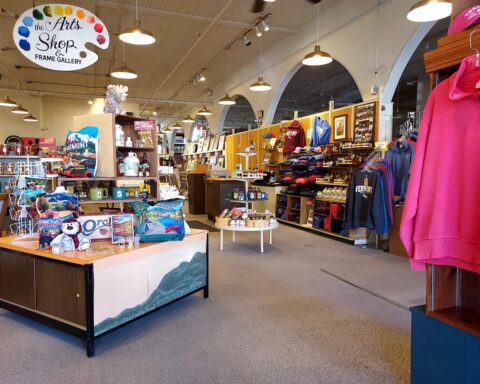Everything you need to know before bringing home a tannenbaum
By Jenn Smith
POWNAL, Vt.
After years of planning, patience and careful cultivation, Golden Acres Farm in Pownal, Vt., has transformed into a happy little choose-and-cut Christmas tree spot.
“I absolutely love Christmas,” said Katie Vandale, a paramedic and captain for the Bennington Rescue Squad.
She co-owns and operates the seasonal tree farm with her boyfriend, Murray Lewis Jr., who helped her transform the 5-acre former horse pasture into an orchard of balsam and Fraser fir trees. They did so by planting about 100 5-year-old saplings in 2008; a sapling takes between 6 and 8 years to mature. Now they have about 1,500 trees in various stages of growth. So when visitors come and choose a Christmas tree, they’re taking home a tannenbaum with at least an 11-year history.
While pine and spruce are also common species of New England Christmas trees, Vandale said she prefers to grow firs, known for their longevity, dark green color, signature aromatics and soft needles.
Vandale said she doesn’t expect many changes in business amid the COVID-19 pandemic.
“In fact, I think there will be a lot more people looking to get outside this year to have that getting-a-Christmas-tree experience,” she said.
Still, patrons should expect to wear a facemask and follow Centers for Disease Control and Prevention public health guidelines.
Whether you’re planning to visit Golden Acres, a nod to the farm’s resident golden retrievers, or another local tree farm, here are Vandale’s suggestions for preparing to take home and care for a live tree for the season.
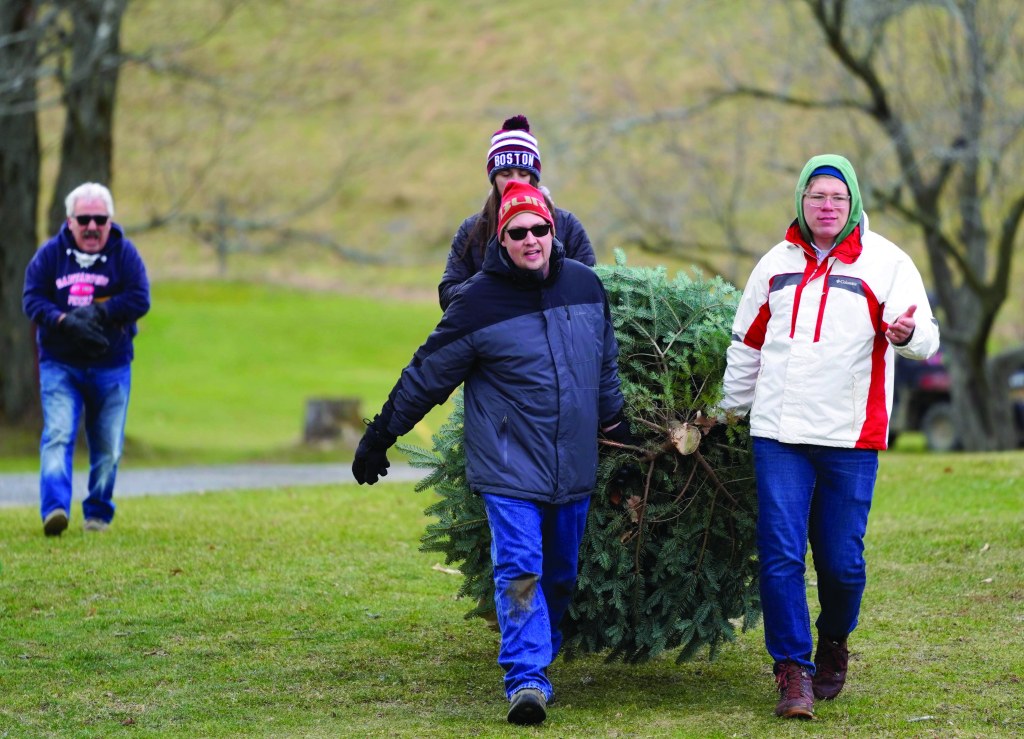
Before you go …
Select a space:
In choosing a place to display your coniferous centerpiece, be sure it’s away from baseboards, fireplaces and other heating sources, but close enough to an electrical outlet, should you plan to plug in Christmas lights.
Measure twice, cut once:
Know the maximum width of the display space, and be sure to factor in to the height added inches from the tree stand and topper. Be sure you have a vehicle big enough to transport the tree, too. Remember that, once cut and exposed to indoor warmth, the branches will settle downward and out a bit.
Plan for your pets:
If you’ve got rambunctious dogs like Vandale, use a sturdy stand and perhaps additional anchors. If your pet tends to chew, consider putting your tree inside some sort of barrier, like a baby gate. The new pet-proofing trend? Anchoring or suspending a Christmas tree from the ceiling. Move over, Mass MoCA maples!
Call ahead:
Double-check a tree farm or stand’s hours by calling ahead or visiting its website or Facebook page. Also check to see whether the tree farm accepts credit and debit cards, or cash only.
What to bring …
Dress for the weather:
Choosing and cutting a Christmas tree takes time. Be sure to bring gloves, a hat and a face covering; wear sturdy boots for the mud and snow, and warm layers of clothing.
Gather your gear:
Bring a saw, sled and rope to secure your tree for transport, as recommended by the farm. Have a camera ready to capture the magical moments. A Thermos of hot cider or cocoa can also make moods merry and bright.
Caring for your tree …
If you choose a pre-cut tree, be sure to have at least a half-inch tall disc cut from the base to freshly expose the trunk so the tree can absorb more water.
Be sure to get the tree home and into a stand with water within 6 to 8 hours of cutting.
Cut Christmas trees can drink up to a gallon of water a day, so check its stand and water it regularly.
A cut tree will typically keep from four to six weeks until it starts significantly shedding its needles and browning.
Skip the additives, like sugar, aspirin or pre-bottled chemicals. Vandale says they don’t really do much to extend tree life significantly and could be a danger to pets or kids if they ingest the treated water.
Learn more about choosing a local tree farm, tree and care here:
- mass.gov/service-details/christmas-tree-farms
- christmas-trees.org/treeselection.htm
- pss.uvm.edu/ppp/articles/xmastree.html
- vtchristmastrees.org
Jenn Smith worked at The Berkshire Eagle as a reporter and editor for 15 years. She’s now a freelance writer in the Berkshires, and is the new engagement editor for the Education Lab at The Seattle Times. While she’ll be relocating to the Pacific Northwest, the Berkshires and Shires of Vermont will always be in her heart.
